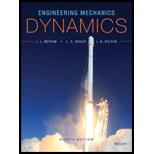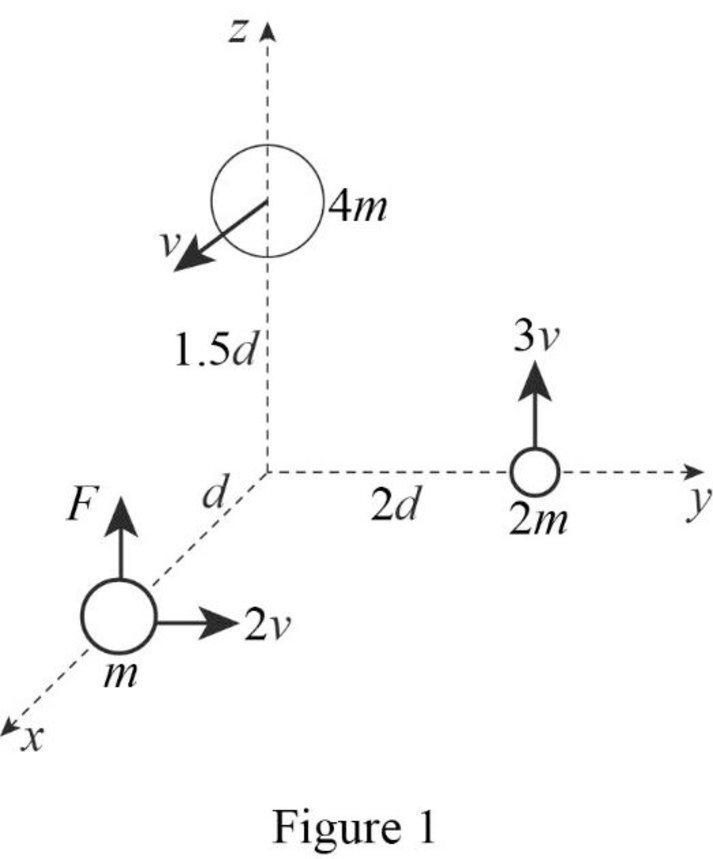
The position
Answer to Problem 93RP
The position vector
The velocity vector
The acceleration vector
The kinetic energy
The angular momentum vector
The time rate of angular momentum vector
Explanation of Solution
Draw the free body diagram of the system f particles is shown in Figure (1).

Write the expression to determine the position vector
Here, mass of the particles is
Write the expression to determine the velocity vector
Here, velocity acting on the particles is
Write the expression to determine the acceleration vector
Here, the external forces acting on the particles is
Write the expression to determine the kinetic energy
Write the expression to determine the angular momentum vector
Write the expression to determine time rate of angular momentum vector
Conclusion:
Susbtitute
Thus, position vector
Susbtitute
Thus, the velocity vector
Susbtitute
Thus, the acceleration vector
Susbtitute
Thus, the kinetic energy
Susbtitute
Thus, the angular momentum vector
Susbtitute
Thus, the time rate of angular momentum vector
Want to see more full solutions like this?
Chapter 4 Solutions
Engineering Mechanics: Dynamics
 Elements Of ElectromagneticsMechanical EngineeringISBN:9780190698614Author:Sadiku, Matthew N. O.Publisher:Oxford University Press
Elements Of ElectromagneticsMechanical EngineeringISBN:9780190698614Author:Sadiku, Matthew N. O.Publisher:Oxford University Press Mechanics of Materials (10th Edition)Mechanical EngineeringISBN:9780134319650Author:Russell C. HibbelerPublisher:PEARSON
Mechanics of Materials (10th Edition)Mechanical EngineeringISBN:9780134319650Author:Russell C. HibbelerPublisher:PEARSON Thermodynamics: An Engineering ApproachMechanical EngineeringISBN:9781259822674Author:Yunus A. Cengel Dr., Michael A. BolesPublisher:McGraw-Hill Education
Thermodynamics: An Engineering ApproachMechanical EngineeringISBN:9781259822674Author:Yunus A. Cengel Dr., Michael A. BolesPublisher:McGraw-Hill Education Control Systems EngineeringMechanical EngineeringISBN:9781118170519Author:Norman S. NisePublisher:WILEY
Control Systems EngineeringMechanical EngineeringISBN:9781118170519Author:Norman S. NisePublisher:WILEY Mechanics of Materials (MindTap Course List)Mechanical EngineeringISBN:9781337093347Author:Barry J. Goodno, James M. GerePublisher:Cengage Learning
Mechanics of Materials (MindTap Course List)Mechanical EngineeringISBN:9781337093347Author:Barry J. Goodno, James M. GerePublisher:Cengage Learning Engineering Mechanics: StaticsMechanical EngineeringISBN:9781118807330Author:James L. Meriam, L. G. Kraige, J. N. BoltonPublisher:WILEY
Engineering Mechanics: StaticsMechanical EngineeringISBN:9781118807330Author:James L. Meriam, L. G. Kraige, J. N. BoltonPublisher:WILEY





